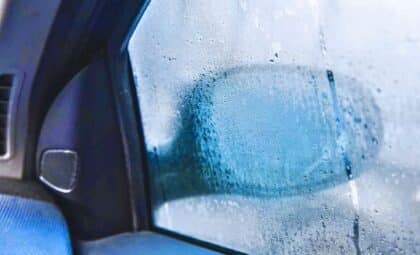
For the first time ever, the entirety of the Formula One pre-season is being live-streamed — via the official F1 TV service — which has given the sport’s most enthusiastic viewership even more opportunity to watch the cars go round in circles and deliberate on what it all means.
Testing came to a close on Thursday after three days of track time (down from four in previous years) and will resume next week for another three days. After that, the next time we’ll see the teams at the track will be in Melbourne, Australia, for the season-opening race.
Pre-season testing, most fans should know, is often a poor indicator of season form. Known variables, such as tire compounds, and unknown variables, such as fuel load and engine mapping, confound one’s ability to determine a car’s true pace. Teams have even been known to come to Australia with substantially different cars than what they showed in testing.
Last year, pundits widely regarded Ferrari as the strongest team on the grid after a great showing in testing, only for it to have a terrible start to the season. This year, viewers will hopefully not make the mistake of confusing pre-season lap times in Barcelona with actual race-winning potential.
Spring Is Finally Coming: How should you prepare your car?
So what should you look for in testing? Typically, the following: How many laps are the teams banging out? Is anyone having a recurring or unusual issue? Is there anything unique about the cars’ designs? None of it will give you a definitive idea of what to expect in 2020, especially over the course of the season, but you may be able to conjure a vague picture of how 2020 will start.
Distance covered, however, is not as relevant in 2020 testing as it was when the hybrid engine era began. Back then, most teams struggled to get through a single day of testing without major reliability issues. More recently, that hasn’t been the case.
After three days of testing, all but one of the teams have completed at least 300 laps, covering 11,371 miles in total — up from 9,035 after three days of testing in 2019. Reliability is, predictably, looking good across the board, though Renault does seem to be lagging behind somewhat, and Ferrari had an unexpected issue at the end of the third day.
As far as designs go, there aren’t many surprises. With few regulation changes in 2020, most of the cars have shown up with design evolutions rather than revolutions. With limited room for front wing development, most of the aero work seems to have been funneled to the bargeboard area, where the cars have gotten increasingly complex since 2017.
Crashed In Testing? This is where to get car repairs if you’re not Romain Grosjean
The talk of the paddock, which you already know about if you watched any pre-season footage, is the dual-axis steering system that Lewis Hamilton and Valtteri Bottas were spied using thanks to their onboard cameras. There’s been a lot of buzz about it in the last two days, though it’s uncertain yet as to how potent the system will actually be.
By pushing or pulling on the steering wheel, Hamilton and Bottas were able to adjust the toe of the front tires while driving at speed. Toe refers to the angle of the wheels in relation to the center line of the vehicle (the longitudinal axis). F1 cars are typically set up to have negative toe, also known as toe-out, which is when the front of the wheel points away from the vehicle. This helps improve stability under braking and can be used to adjust the balance of the car in corners.
The downside of having any sort of toe angle is that, especially when combined with aggressive camber, it contributes to rolling resistance and thus increases tire wear while reducing top speed. The DAS system would allow Hamilton and Bottas to benefit from the advantages of a toe angle in the corners while mitigating the disadvantages in the straights.
It’s never been seen before in F1 and, supposedly, the system is deemed legal by the FIA. That means that if teams determine it to be worth a significant advantage, and not too difficult to implement in their current designs, you can expect it to be copied in short order. In fact, I would bet that at least one other team will show up with its own take on the system by Melbourne.
Kurt Verlin was born in France and lives in the United States. Throughout his life he was always told French was the language of romance, but it was English he fell in love with. He likes cats, music, cars, 30 Rock, Formula 1, and pretending to be a race car driver in simulators; but most of all, he just likes to write about it all. See more articles by Kurt.









